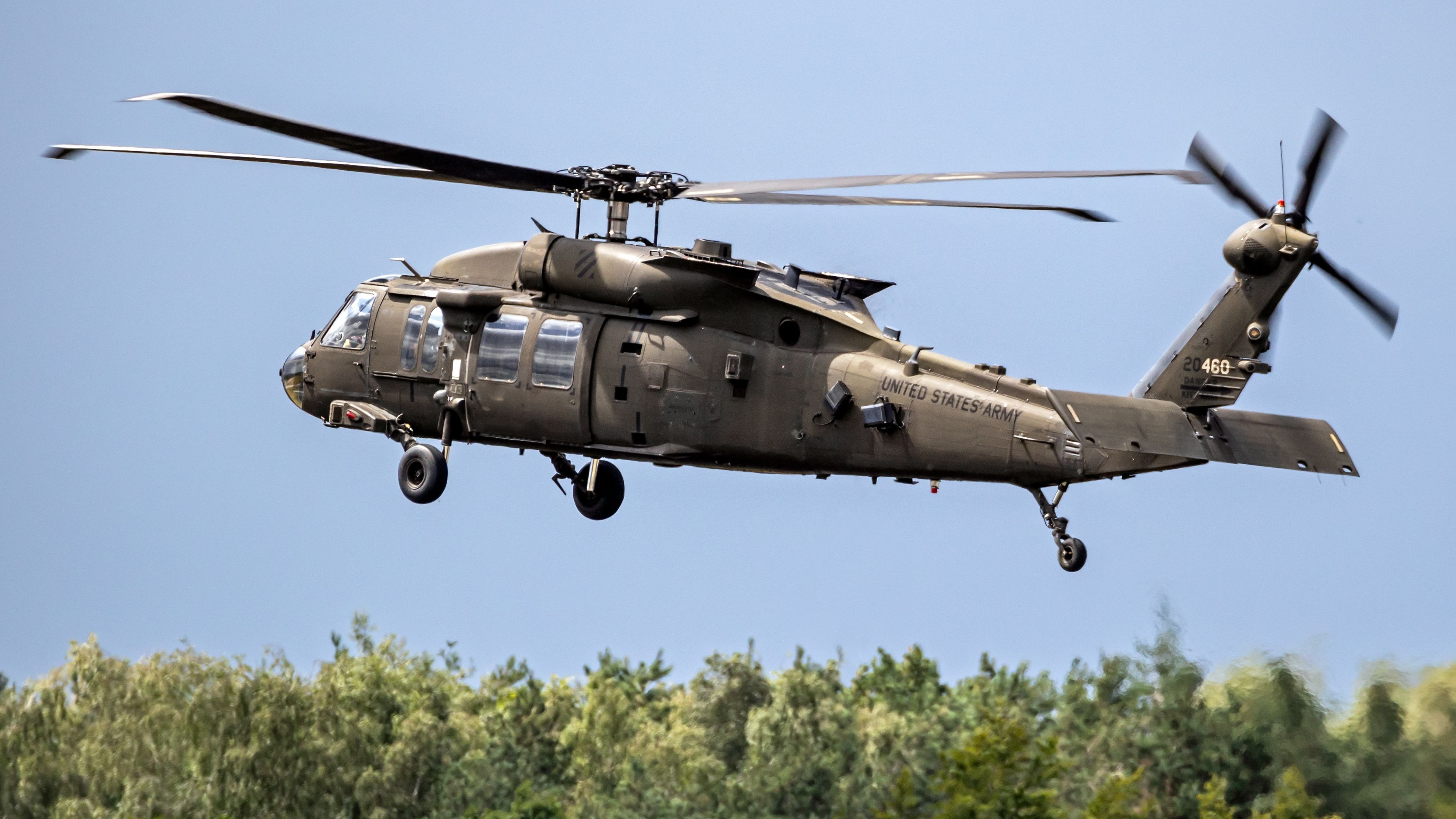How the UH 60 Revolutionized Helicopter Design for Military and Civilian Uses
How the UH 60 Revolutionized Helicopter Design for Military and Civilian Uses
Blog Article
Whatever You Required to Learn About the UH 60 Helicopter
The UH-60 helicopter, a cornerstone of United state Military air travel since its launching in 1979, stands for an exceptional mix of design and functional flexibility. As military requirements evolve, so also does the helicopter, with recurring improvements intended at improving its capacities and incorporating modern innovations.
Background of the UH-60
Established in the late 1970s, the UH-60 Black Hawk helicopter became an action to the united state Army's requirement for a functional energy helicopter that might carry out a selection of objectives under difficult conditions. The inspiration for its design was the shortcomings identified in the earlier helicopters made use of throughout the Vietnam War, specifically in terms of rate, survivability, and ability to move.
The Black Hawk was developed by Sikorsky Airplane, integrating advanced innovations and products to improve its efficiency and sturdiness. It was formally introduced right into solution in 1979, quickly coming to be a vital asset for military operations - uh 60. Its ability to carry soldiers, medical evacuation, and logistical support in both fight and altruistic missions made the Black Hawk an invaluable component of the united state Army's aeronautics fleet
Throughout the decades, the UH-60 has been continuously upgraded, adapting to the transforming nature of warfare and the developing demands of contemporary armed forces operations. Its functional background includes engagement in major problems, peacekeeping missions, and disaster relief initiatives, strengthening its reputation as a reliable and dependable helicopter in various atmospheres worldwide.

Design and Specs
The style of the UH-60 Black Hawk helicopter constantly reflects a dedication to operational efficiency and adaptability. Established by Sikorsky Airplane, this medium-lift utility helicopter features a streamlined, aerodynamic body that boosts rate and maneuverability. Its tandem blades system, identified by 2 counter-rotating blades, lessens resonance and raises lift capacity, permitting for safer procedures in varied environments.
The UH-60 is powered by 2 T700-GE-701C turboshaft engines, giving a maximum speed of roughly 180 knots and an array of around 400 nautical miles. Its durable airframe is constructed from innovative composite materials, guaranteeing sturdiness while preserving a reasonably low weight. The helicopter has an optimum gross weight of regarding 22,000 extra pounds, supporting a versatile haul arrangement.

Goals and duties
A versatile platform, the UH-60 Black Hawk helicopter serves a wide range of functions and goals within army procedures. Designed largely for troop transportation, it can carrying up to 11 soldiers, making it an essential property for rapid release and logistical support.
In addition to army transport, the UH-60 masters clinical emptying (MEDEVAC) goals, furnished with sophisticated medical devices to offer important treatment throughout transit. Its ability to operate in diverse settings improves its effectiveness in combat search and rescue (CSAR) procedures, where swift removal of employees is you can find out more vital.
The helicopter additionally plays a considerable role in reconnaissance and monitoring objectives, utilizing onboard sensing units and devices to collect intelligence. Its adaptability prolongs to logistical support, qualified of moving products and tools to onward operating bases.
In battle procedures, the UH-60 can be outfitted with different weapon systems, allowing it to provide close air assistance. Its multi-role ability makes the Black Hawk an indispensable device for contemporary army pressures, adapting perfectly to the advancing demands of battlefield scenarios and ensuring goal success throughout a variety of operational contexts.
Performance and Abilities
Known for its durable performance, the UH-60 Black Hawk helicopter boasts excellent capacities that boost its operational efficiency across various goals. uh 60. This multi-role aircraft is geared up with powerful twin-engine Turbomeca Arriel 1D1 engines, providing outstanding rate and maneuverability, with a maximum cruise ship speed of about 150 knots and a functional variety of around 400 maritime miles
The Black Hawk's innovative avionics and fly-by-wire control systems dramatically enhance trip security and handling, permitting it to run in varied settings, consisting of damaging climate condition. Its convenience is further exemplified by its ability to carry up to 11 completely outfitted soldiers or a payload of about 8,000 pounds, making it suitable for troop transportation, medical evacuation, and logistical support missions.
Additionally, the UH-60 is made for survivability, including strengthened airframes, ballistic protection for staff and guests, and advanced countermeasure systems to avert hazards. The helicopter's agility and speed, incorporated with its capability for rapid deployment, make it an important possession in contemporary military procedures, ensuring that it remains a key component of tactical air support and battleground mobility.
Future Developments

One significant emphasis is the combination of advanced avionics systems, which will boost situational understanding via boosted navigating and communication capacities. This includes the prospective use expert system to assist pilots in decision-making and objective preparation.
In addition, future variants may incorporate sophisticated products and layout features to bolster the helicopter's longevity and lower its radar signature, boosting survivability in opposed atmospheres.
The intro of hybrid-electric propulsion systems is also imminent, aiming to boost gas effectiveness and reduce logistical problems. Such improvements can prolong functional array and reduce the helicopter's ecological impact.

Conclusion
The link UH-60 helicopter stands for a substantial improvement in armed forces aeronautics considering that its intro in 1979. The UH-60's withstanding visibility underscores its essential function in contemporary armed forces procedures and highlights the ongoing development of military aeronautics technology.
The UH-60 helicopter, a cornerstone of United state Military aeronautics considering that its debut in 1979, stands for an impressive mix of engineering and functional convenience. As army demands develop, so also does the helicopter, with ongoing innovations intended at improving its abilities and integrating modern innovations.The style of the UH-60 Black Hawk helicopter continually mirrors a commitment to operational performance and adaptability. Developed by Sikorsky Aircraft, this medium-lift utility helicopter features a sleek, aerodynamic fuselage that boosts rate and maneuverability.The UH-60 helicopter represents a considerable improvement in army aviation because its intro in 1979.
Report this page